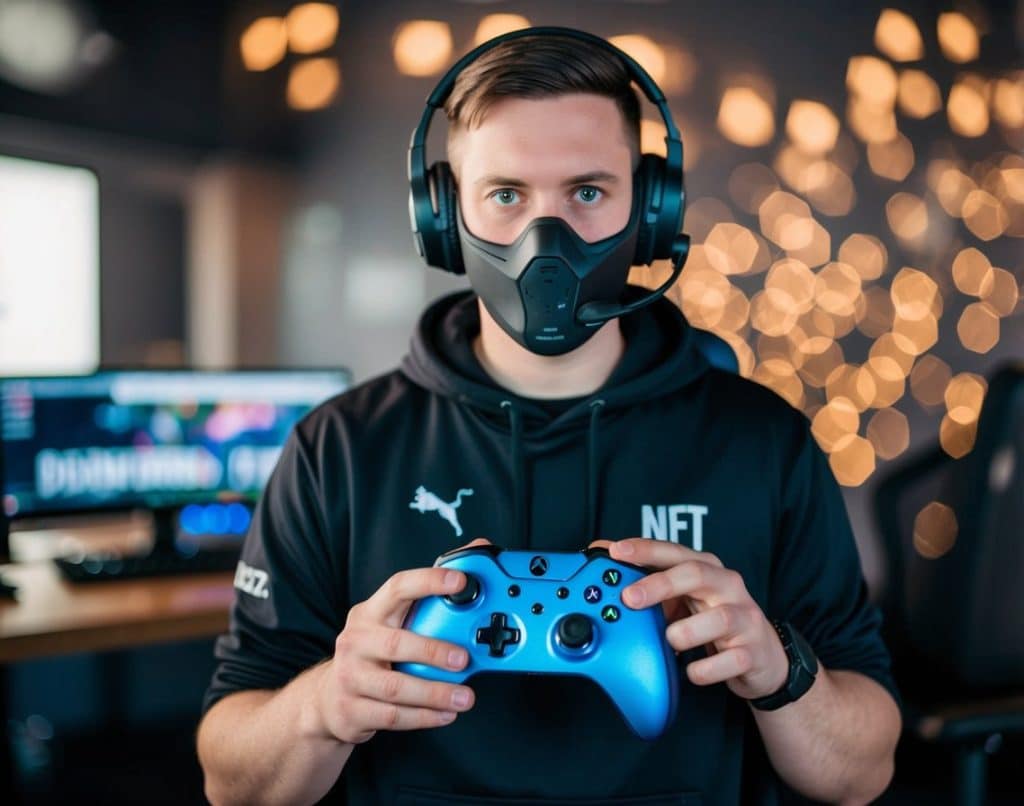Remember when NFTs? They were supposed to be the future of digital ownership? For a while, it seemed like everyone, from influencers to tech bros, was throwing around buzzwords like “decentralization” and “Web3”. It felt as if they’d cracked the code to digital gold. Fast forward a couple of years, and the NFT market is in freefall, with once-million-dollar assets now worth less than a fancy dinner – or half a dozen eggs.
Meanwhile, in the world of Counter-Strike, skins are still thriving. Some have even gone up in value, with rare items selling for tens of thousands of dollars. But why? Why did one digital collectible market crash and burn while the other remains strong? The answer is simple: let’s break it down.
What Are CS Skins and NFTs?
At first glance, Counter-Strike skins and NFTs seem to be similar. They are both “digital assets” that people could collect, trade, and sell for real money.
Counter-Strike skins were introduced in 2013. They are purely cosmetic items, meaning they don’t give you an advantage in-game – but that hasn’t stopped them from becoming status symbols. Players are flexing them in matchmaking and pro tournaments. The rarest skins have high prices – some have reportedly been sold for five or even six figures.
Non-Fungible Tokens or NFTs were hailed as unique, verifiable digital assets that people could own on the blockchain. Whether it was pixelated monkeys or Jack Dorsey’s first tweet, NFTs were sold as the future of collectibles.
They seem pretty similar, right? They are both digital collectibles with real-world value. So why did CS skins hold their ground while NFTs collapsed?
CS Skins Have a Real Purpose. Most NFTs Didn’t.
Here’s the big one: CS skins actually do something. They exist inside a game that people play every single day.
- If you unbox a Karambit Doppler, you can actually use it in matches, show it off to teammates, and flex on enemies.
- CS skins are part of the in-game culture. Pros use them, streamers showcase them, and casual players love them.
- Even if skins weren’t tradable for real money, people would still want them. Players grind for rare cosmetics in games like Fortnite and Valorant even as we speak.
Now, contrast that with most NFTs. Once the hype died down, people started asking: What do I actually do with this?
- You couldn’t use your Bored Ape NFT in a game.
- You couldn’t flex it in a meaningful way (aside from setting it as a profile picture).
- You couldn’t even sell it easily once demand crashed.
Without a game or platform keeping demand alive, NFTs became nothing more than glorified JPEGs, and most people weren’t willing to keep throwing money at them.
CS Skins Are Driven by Gamers, Not Just Speculators
Let’s be real: Both CS skins and NFTs had their fair share of speculation. But the difference?
- The CS skin economy is player-driven. People don’t just buy skins to trade – they buy them because they actually want to use them in-game.
- NFTs, on the other hand, were almost entirely speculative. The majority of people weren’t interested in the art or the “community” behind them. They just wanted to flip them for a profit.
Once the NFT bubble popped and everyone realized they were buying digital tulips, the demand disappeared. Meanwhile, CS skins are still valuable because the game itself is still alive.
The CS Skin Market Is More Stable Than NFTs Ever Were
While CS skins have fluctuated in price, they’ve remained relatively stable. A big reason for this is that the market has existed for over a decade, and platforms like Steam Market and CSGORoll provide secure, trusted ways to trade skins.
Contrast that with NFTs, which were the Wild West of digital assets:
- Scams and rug pulls were everywhere. Remember those NFT projects where the creators just vanished after making millions? Yeah, that happened a lot.
- Marketplaces were unreliable. While OpenSea was the biggest NFT marketplace, it had major security issues, including stolen NFTs and fake listings.
- No central regulation. With CS skins, at least Valve controls the Steam Market, ensuring that the economy doesn’t completely collapse.
This is where CSGORoll also changed the game. Founded in 2016 by Killian, aka EyE, the platform was built on principles like transparency, fairness, and innovation. What started as a passion project quickly became one of the most trusted platforms in the CS economy. To this day, its priorities are security, responsible gaming, and a seamless trading experience.
In short, it represents a level of stability and trust that NFTs never really had.
CS Skins Didn’t Have the Same Level of Hype-Driven Nonsense
At the peak of the NFT craze, we saw some truly insane sales:
- A Bored Ape Yacht Club NFT that sold for $3.4 million in 2022 is now worth less than 10% of that.
- That Jack Dorsey tweet NFT we mentioned earlier? It sold for $2.9 million at the peak of the NFT craze. The guy who bought it tried to resell it and got crickets in return.
- Australian Open’s NFT project – which linked tennis NFTs to court plots – saw prices drop from $446 to just $25 in 2025.
With CS skins, there was never that ridiculous “million-dollar JPEG” speculation. Prices could go up, sure, but at least they were based on actual demand from gamers, not just billionaires and influencers hyping them up.
The CS Skin Economy Has a Future. NFTs… Not So Much.
While NFT companies are scrambling for new ideas, CS skins continue to thrive. Why? Because the Counter-Strike community isn’t going anywhere.
- Counter-Strike 2 just launched, keeping the game fresh and ensuring that skins remain relevant.
- CS skins are still being traded, used, and collected, just like they have been for years.
- Even as new skins get added, old skins hold their value because of their rarity and demand.
Meanwhile, the NFT space has lost credibility. Some brands still push NFT integration in gaming, but let’s be honest – most players don’t want it.
Why CS Skins Are Still Here and NFTs Aren’t
At the end of the day, CS skins survived because they actually serve a purpose. They’re more than just digital collectibles – they’re a core part of a game that millions of people play every day. NFTs, on the other hand, were mostly a hype-driven experiment that collapsed the second people stopped believing in it.
Does this mean all NFTs are worthless? Not necessarily. But if they ever want to succeed, they’ll need to offer real value, the way CS skins have done for over a decade.
What do you think? Did NFTs ever stand a chance, or were they doomed from the start? And do you own any CS skins that have gone up in value? Drop a comment – I’d love to hear your thoughts!









 Bitcoin
Bitcoin  Ethereum
Ethereum  Tether
Tether  XRP
XRP  Solana
Solana  USDC
USDC  Dogecoin
Dogecoin  Cardano
Cardano  TRON
TRON  Lido Staked Ether
Lido Staked Ether  Wrapped Bitcoin
Wrapped Bitcoin  Toncoin
Toncoin  Chainlink
Chainlink  LEO Token
LEO Token  Stellar
Stellar  USDS
USDS  Avalanche
Avalanche  Wrapped stETH
Wrapped stETH  Shiba Inu
Shiba Inu  Sui
Sui  Hedera
Hedera  Litecoin
Litecoin  Polkadot
Polkadot  MANTRA
MANTRA  Bitcoin Cash
Bitcoin Cash  Bitget Token
Bitget Token  Ethena USDe
Ethena USDe  WETH
WETH  Binance Bridged USDT (BNB Smart Chain)
Binance Bridged USDT (BNB Smart Chain)  Pi Network
Pi Network  Hyperliquid
Hyperliquid  Wrapped eETH
Wrapped eETH  WhiteBIT Coin
WhiteBIT Coin  Monero
Monero  Uniswap
Uniswap  Dai
Dai  Aptos
Aptos  NEAR Protocol
NEAR Protocol  sUSDS
sUSDS  Pepe
Pepe  OKB
OKB  Cronos
Cronos  Gate
Gate  Coinbase Wrapped BTC
Coinbase Wrapped BTC  Tokenize Xchange
Tokenize Xchange  Mantle
Mantle  Internet Computer
Internet Computer  Ethereum Classic
Ethereum Classic